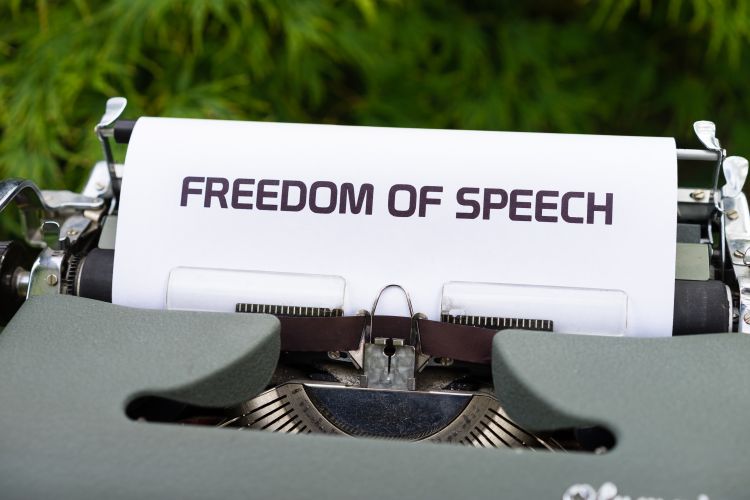
New Broadcasting Bill: As revolutionary technologies like over-the-top streaming platforms and decentralised broadcasting networks emerge, national governments face a growing challenge in regulating broadcast content effectively. The ministry of information and broadcasting recently released the draft Broadcasting Services (Regulation) Bill, 2023 for public consultation. This draft bill seeks to enforce government-mandated programming and advertising rules on broadcasting platforms, including OTT) services such as Netflix and Amazon.
In essence, the new provisions, if enacted, would require OTT services to ensure that their content is certified by a content evaluation committee and comply with a multi-layered regulatory system. Free speech advocates have raised concerns over these proposals, arguing that the proposed changes to broadcasting regulations could hinder creative expression and restrict freedom of speech.
READ | Social security in India: The fragile shield faces growing economic challenges
New Broadcasting Bill, 2023
The new legislation is slated to replace the Cable Television Networks (Regulation) Act of 1995 which currently regulates the broadcast sector. The government intends to consolidate broadcasting, OTT, digital media, DTH, and IPTV under one comprehensive Bill. Furthermore, the draft Bill seeks to extend its jurisdiction to include digital news, aligning with the government’s vision for ease of doing business and living. The draft Bill also prescribes penalties for violations of the programme or advertising code. The initial violation incurs a fine of up to Rs 20,000, while subsequent breaches may attract penalties up to Rs 1 lakh.
India’s OTT industry is experiencing rapid growth, with projections indicating a market expansion at a CAGR of 14.32% over the next five years, potentially doubling from $1.8 billion in 2022 to $3.5 billion by 2027. The market currently includes Indian OTT players like Zee5, SonyLIV, and JioCinema, as well as international giants like Disney+ Hotstar, Amazon, and Netflix.
Critics argue that the Bill may prioritise government control and regulation over public interest. They believe that subjecting OTT content to government-prescribed programmes and advertising codes could stifle artistic freedom. Concerns also extend to the potential homogenisation of content across platforms, which may diminish the diversity and creativity currently seen.
The draft Bill proposes the establishment of Content Evaluation Committees (CECs) and a Broadcast Advisory Council (BAC) to oversee content. Industry insiders worry this will impose unnecessary compliance burdens on OTT platforms and negatively impact user experience. Although the BAC will serve as an advisory body, the final decision in code breach cases will rest with the central government.
The Bill has been sharply criticized for potentially amplifying the erasure or selective representation of Indian minority communities, potentially normalizing a universal Hindu identity. The draft’s ambiguity regarding “public interest” and content that could cause “disharmony or feelings of enmity, hatred, or ill-will between different groups” is concerning. A government-appointed officer overseeing compliance is likely to align with government interests.
In times of heightened communal conflicts, artists and creators face the challenge of balancing government appeasement and societal reflection. Historical precedents show governments forcing channels to remove content under vague threats of cultural invasion.
A recent example includes the backlash faced by apparel brand Fabindia for an advertisement titled ‘Jashn-e-Riwaaz,’ criticized for not depicting models wearing a bindi in a Diwali collection ad. Fabindia clarified that the ad was for celebrating Indian festivals in general and not specifically for Diwali. Nevertheless, the brand had to withdraw the campaign and cautiously named its next campaign ‘Jhil mil si Diwali’.
This incident, along with regular criticism faced by Netflix and Amazon Prime Video for “anti-national” content, raises concerns about the government’s motives. The critical question remains whether the government should have extensive control over broadcasting, historically used as a tool for propaganda.
Will self-regulation work
The feasibility of self-regulation by broadcasters, as proposed in the draft Broadcasting Services (Regulation) Bill 2023, presents a complex scenario. Legal experts view the self-regulatory mechanism positively, noting its potential to enhance responsibility and accountability among broadcasters and networks regarding the content they provide to the public. This aligns with the framework established under the Information Technology (Intermediary Guidelines and Digital Media Ethics Code) Rules, 2021.
The move could indeed foster a greater sense of ownership over the content disseminated, encouraging broadcasters to be more mindful of their societal impact. However, the effective implementation of self-regulation hinges on the clarity and practicality of the regulatory framework, ensuring it enhances content quality without stifling creative expression.
Despite the potential benefits, there are significant concerns. For instance, the Bill’s requirement to disclose personal details of Content Evaluation Committee (CEC) members raises issues of privacy and safety. This disclosure, especially in the context of the new Digital Personal Data Protection legislation, might unnecessarily expose these individuals to personal risks, given the diverse and sometimes volatile reactions of audiences to sensitive content.
The effectiveness of self-regulation depends largely on the independence and impartiality of regulatory bodies like the Broadcast Advisory Council. Their role in overseeing regulation and compliance is crucial but must be free from bias and external influences to ensure fair and just oversight of broadcasting content. The draft Bill’s treatment of these entities, particularly in the context of exemptions and registrations, remains unclear. This lack of clarity could lead to inconsistencies in how different broadcasting mediums are regulated, potentially leaving loopholes for certain platforms.
The requirement for all broadcasters to have their content certified by the CEC, except for programmes prescribed by the Central government, raises concerns about artistic freedom and the extent of government control over content. As the government seeks feedback on the draft Bill, these issues highlight the need for careful consideration to ensure that self-regulation in broadcasting is both practical and protective of the fundamental principles of freedom of expression and artistic creativity.
The debate over how to regulate broadcast content in the face of revolutionary technologies is likely to continue as new media formats and distribution methods emerge. National governments need to find a balance between protecting public interest and ensuring that regulations do not stifle innovation and free expression.
